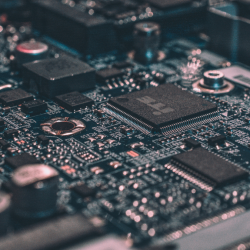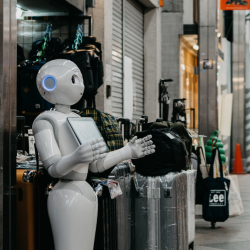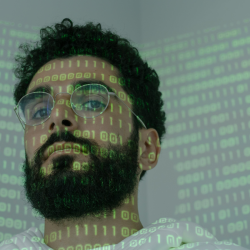If you thought 2023 was the revolutionary year of AI, 2024 is going to blow your mind…
2023 was a foundation year — laying out the trellis for the vines to grow on: 2024 is the grow year. Of course, there will be sceptics among you. People who say this is another gimmick for marketers to obsess over — pointing to examples like Meta’s metaverse, which has yet to materialise. If you fit into this category perhaps you’re a luddite, a controversialist, or maybe you just haven’t been paying that much attention.
Let’s clear things up a bit. I liken the coming wave of change to when the App Store launched in 2008. Mobile computing and highly adaptable software brought thousands of use cases, and hundreds of thousands of apps to anyone with a smart phone. Remember the old catchphrase: ‘There’s an app for that!” You might think about reusing that here as: ‘There’s an AI for that!‘
Alongside the fast evolving models everyone is already familiar with, ChatGPT, Google Bard, Midjourney, there are countless new AI solutions popping up almost daily. Many of these are powered behind the scenes by the main models, but offer finer cut solutions to more specific problems and tasks. A recent study conducted by Salesforce found that 51% of marketers are using generative AI right now. That number is only expected to climb throughout this next year, and it’s easy to see why.
AI tools have been helping marketers do their jobs faster. Helping them optimise SEO, test and experiment with copywriting, explore creative ideas, hyper personalise messaging content and build campaigns with research, insights and presentations/proposals. We’re experiencing a shift from ‘busy work’ to ‘strategic work’ — where the everyday chores of a job, those pesky tasks that soak up working hours can be automated, augmented and sped up, so that workers can focus on the big picture stuff. And there looks to be a lot more time to focus on that big picture. In marketing alone, AI tools are expected to save workers 5 hours per week. This equates to around a whole extra month a year. Before you read on, you might just want to let that sink in for a moment.
Windfalls in productivity and efficiency
These kind of EFFICIENCY savings are the first level in my AI development pyramid, which lays out a pathway from where we are now to where we’re likely going. Some analysts are making bolder predictions, with Ark Invest’s Cathie Wood expecting a fourfold productivity increase. That kind of boost would see world GDP moving from the 2% or 3% growth figures we can only dream of today, to 6% or 9% growth.
An increase in productivity tends to filter down into three places: higher profits, higher wages, and lower prices leading to deflation. These are the things that will impact the everyday person, even if they don’t use AI in their jobs (though finding a job without AI may become a challenge by 2025).
Sweeping change across all jobs
The next level after Efficiency is REPLACEMENT. We can expect certain jobs to be made redundant over the next 5 years. At the moment there’s still a great deal of oversight and verification that has to happen within a company that’s using AI. AI tools make mistakes, they can be inaccurate, and at times they’ve been known to be a little biased. That doesn’t mean we shouldn’t use them — the productivity payoff alone is worth it. But we have to use them wisely.
As they get better and we should expect them to if they’re following Moore’s Law as other technological advancements do. We’ll have less trust issues with our AI counterparts, and give them more and more tasks — perhaps even entire jobs. (I’m defining job here as a collection of consecutive tasks.) This is where things could get concerning. Companies may seek to hire less staff to fulfil a higher output, using AI with less overheads. Job descriptions might change, too. Social Media Community managers for example, might end up being the overlord of several AI bots, shifting their daily work from thinking about what’s the best response, to policing AI language models and maintaining tone of voice.
Science fiction futures
The final tier on my pyramid is INNOVATION. This is ‘science fiction’ stuff. Use cases in this tier haven’t even been invented yet, so it’s hard to really dig into any meat here — but we can speculate. Across all industries we should see sweeping changes. Everything is going to be touched by this, from politics, to scientific research, advertising and marketing, farming — even the arts. Civilisation as we know it today is going to look very different after a decade of AI. The way we learn in school will change. The way we get healthcare will change. The kinds of jobs available to us will change. I’m envisaging a whole new world, with new jobs based in or enhanced by AI. Whether that’s building the models, maintaining them, supervising them, helping people and companies onboard to new tools, testing, or managing AI prompts and briefs. A world where the bulk load of ‘doing’ work can be automated, and we, homo sapiens, can do the thing that homo sapiens do best — think.
Essentially the ‘Knowledge Work Force’ that sits behind the desk may be about to get a promotion into management, as everyone becomes a manager or strategist of their company’s or their own personal AI systems. If this sounds sci-fi to you, remember, it’s 2024. Back to the Future had us on hover boards in 2015.
AI is the future. And the future is here.
Featured image: Google DeepMind / Pexels































